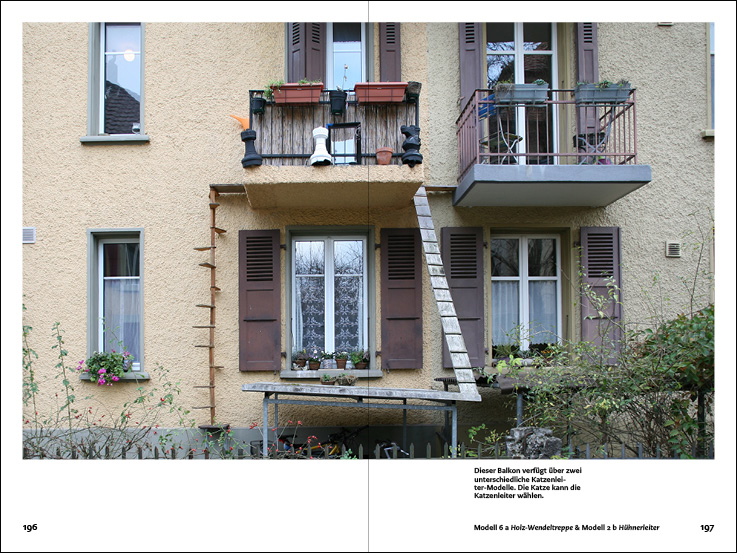[Most Recent Entries] [Calendar View]
Friday, June 7th, 2019
| Time | Event |
| 7:11a | The Longest of the Grateful Dead’s Epic Long Jams: “Dark Star” (1972), “The Other One” (1972) and “Playing in The Band” (1974) As a dedicated fan of the long jam—I always felt like I should try to dig the Grateful Dead. I didn't not dig the Grateful Dead. But I suffered from underexposure to their music, if not to their reputation as endless noodlers. By the time I gave the Dead a chance my head was full of ideas of what a long jam should be, from the likes of Kraftwerk, Coltrane, Neil Young, Velvet Underground, Sonic Youth, Pink Floyd, Sun Ra... Herein lies a difference. Some jams are structured, controlled, almost orchestral, building into movements or droning on into a haze of noise and sonic wash. Then there’s the Dead, the world’s finest purveyors of meandering endless noodling. I don’t mean that to sound derogatory. One could say the same thing about many jazz ensembles—like Sun Ra’s Arkestra or Miles Davis’ Bitches Brew period—without taking away from the brilliant abstraction, the keen conversational interplay, the dynamic range and moments of anticipation, the phenomenal solos.... Maybe there's a lot more going on than noodling, after all, even if the “endless” part can seem accurate when it comes to the Dead, a point on which I’ve seen Deadheads agree. Of what might be the band’s longest jam—a nearly 47-minute live rendition of “Playing in The Band” from 1974 (top)—one Reddit fan, MrCompletely, writes, "Playin' is significantly longer than it is good.” Form your own opinion. Your attention span might make up your mind for you. A far more common topic in forums like Reddit’s r/gratefuldead are conversations about not only which live song ranks as the longest jam, but how blissful and magical said jam was and whether the Deadhead saw the jam or forever regrets missing the jam. One Dead fan, Pyratefish, cites “The Other One” from 9-17-72 as “a beast” to beat them all. “Forty minute ride in to the far reaches of the universe that culminates in a battle for your very soul.” Top that. Maybe we can, with another candidate for longest jam, a performance of “Dark Star” in Rotterdam in 1972. Mention of this jam brought up other contenders, most of them versions of “Dark Star” or “Dark Star” medleys. One fan, lastLeafFallen, even suggests a “jazzy, experimental, and mind-bending” version of the song from 1990, but they don’t get any takers on that one, even though “Branford Marsalis sits in on sax making this jam especially special!” The Grateful Dead were genuine jazzheads and meshed well with musicians like Marsalis and Miles Davis. But they didn’t play jazz themselves so much as they used loose jazz figures and ideas to make experimental rock. When done well, it is done exceptionally well, as in the inevitably-overstuffed, 48-minute-long Rotterdam “Dark Star” further up. We can hear strains of future post-rock bands like Tortoise and even late Radiohead, hints of music that hadn’t arrived yet on the planet. And other long passages that sound like something only the Grateful Dead could play. Just as their early fusion of country, rock, and blues had produced something unlike any of them, their fusion of jazz and rock could synthesize new forms. Or it could fall apart, or both several times over in the same song or at the same time. Hear the full 1974 concert at the University of Seattle at the site Live for Live Music. The epic, 47-minute "Playing in The Band" is track 17. Suggest other candidates for longest Grateful Dead jam in the comments. Related Content: Stream 36 Recordings of Legendary Grateful Dead Concerts Free Online (aka Dick’s Picks) Josh Jones is a writer and musician based in Durham, NC. Follow him at @jdmagness The Longest of the Grateful Dead’s Epic Long Jams: “Dark Star” (1972), “The Other One” (1972) and “Playing in The Band” (1974) is a post from: Open Culture. Follow us on Facebook, Twitter, and Google Plus, or get our Daily Email. And don't miss our big collections of Free Online Courses, Free Online Movies, Free eBooks, Free Audio Books, Free Foreign Language Lessons, and MOOCs. |
| 8:00a | A New Photo Book Documents the Wonderful Homemade Cat Ladders of Switzerland
There are days when Calgon is not escape enough… Days when one longs to be a cat, specifically a free-ranging feline of Bern, Switzerland, as featured in graphic designer Brigitte Schuster’s forthcoming book, Swiss Cat Ladders... Some American cats come and go freely through—dare we say—doggie doors, those small apertures cut into existing points of entry, most commonly the one leading from kitchen to Great Outdoors. The citizens of Bern have aimed much higher, customizing their homes in alignment with both the feline commitment to independence and their fearlessness where heights are concerned. As Schuster documents, there’s no one solution designed to take cats from upper residential windows and patios to the destinations of their choosing.
Some buildings boast sleek ramps that blend seamlessly into the existing exterior design.
In others, surefooted pussies must navigate ramshackle wooden affairs, some of which seem better suited to the hen house.
One cat ladder connects to a nearby tree.
Another started life as a drain spout.
Humans who prefer to outsource their cat ladders may elect to purchase a prefabricated spiral staircase online.
Pre-order Swiss Cat Ladders for 45 € using the order form at the bottom of this page. The text, which is in both German and English, includes diagrams to inspire those who would cater to their own cat’s desire for high flying independence. All photographs © Brigitte Schuster Related Content: An Animated History of Cats: How Over 10,000 Years the Cat Went from Wild Predator to Sofa Sidekick Meet Freddie Mercury and His Faithful Feline Friends Ayun Halliday is an author, illustrator, theater maker and Chief Primatologist of the East Village Inky zine. Join her in New York City this June for the next installment of her book-based variety show, Necromancers of the Public Domain. And congratulations to her homeschooled senior, Milo Kotis, who graduates today! Follow her @AyunHalliday. A New Photo Book Documents the Wonderful Homemade Cat Ladders of Switzerland is a post from: Open Culture. Follow us on Facebook, Twitter, and Google Plus, or get our Daily Email. And don't miss our big collections of Free Online Courses, Free Online Movies, Free eBooks, Free Audio Books, Free Foreign Language Lessons, and MOOCs. |
| 11:00a | What Did Old English Sound Like? Hear Reconstructions of Beowulf, The Bible, and Casual Conversations What is the English language? Is it Anglo-Saxon? It is tempting to think so, in part because the definition simplifies a linguistic history that defies linear summary. Over the course of 1000 years, the language came together from extensive contact with Anglo-Norman, a dialect of French; then became heavily Latinized and full of Greek roots and endings; then absorbed words from Arabic, Spanish, and dozens of other languages, and with them, arguably, absorbed concepts and pictures of the world that cannot be separated from the language itself. Shakespeare and other writers filled in the gaps (and still do), inventing words where they were lacking. Why do we then refer to the long-dead Anglo-Saxon language as “Old English,” if it is only a distant ancestor, and one, you’ll note, no English speaker today understands? There are many technical reasons for this, but to put it in plain terms: if English were a body, Anglo-Saxon might be the bones and ligaments: not only for the hardness of its consonants and its blunt, unadorned poetry, but because it contains the most common words in the language, the structural bits that hold together all those pan-linguistic borrowings. Observe the piece of verse known as Cædmon’s Hymn, below. Amidst the tangle of unfamiliar phonemes and extinct letters like the “þ,” you cannot miss such bedrock words as “and,” “his,” “or,” “He,” and “to.” In other texts, you’ll find recognizable equivalents of “father,” "mother," “husband,” “wife,” “good,” “god," and many other common household words.
Despite sharing many words with modern English, however, Anglo Saxon is another language, from an entirely different world long disappeared. No one living, of course, knows exactly what it sounded like, so scholars make their best educated guesses using internal evidence in the scant literature, secondary sources in other languages from the time, and similarities to other, living languages. Now that you’ve seen what Old English looks like, hear how it sounds to modern ears. In the video at the top, student of the language Stephen Roper reenacts a casual conversation with an Anglo-Saxon speaker, one who can understand but cannot speak contemporary English. The other examples here come from literary contexts. Further up, Justin A. Jackson, Professor of English at Hillsdale College, reads the opening lines of Beowulf, and just above, hear an unnamed narrator read the epic poem’s full Prologue. Just below—backed by a dramatic, droning score and recited over footage of misty English moors—a reading of “The Lord’s Prayer” in 11th century Old English. In this text, you’ll pick out quite a few more familiar words, though the fact that most readers know the modern English equivalent probably doesn’t hurt. But if you feel confident after listening to these speculative reconstructions of the language, enough to take a crack at reading it aloud yourself, head over this University of Glasgow collection of Old English readings. Related Content: Hear Beowulf Read In the Original Old English: How Many Words Do You Recognize? Josh Jones is a writer and musician based in Durham, NC. Follow him at @jdmagness What Did Old English Sound Like? Hear Reconstructions of Beowulf, The Bible, and Casual Conversations is a post from: Open Culture. Follow us on Facebook, Twitter, and Google Plus, or get our Daily Email. And don't miss our big collections of Free Online Courses, Free Online Movies, Free eBooks, Free Audio Books, Free Foreign Language Lessons, and MOOCs. |
| 4:00p | How David Bowie Delivered His Two Most Famous Farewells: As Ziggy Stardust in 1973, and at the End of His Life in 2016 When David Bowie left us on January 10, 2016, we immediately started seeing the just-released Blackstar, which turned out to be his final album, as a farewell. But then, if we looked back across his entire career — a span of more than half a century — we saw that he had been delivering farewells the whole time. Throughout much of that career, Bowie's observers have reflexively compared him to a chameleon, so often and so dramatically did he seem to revise his performative identity to suit the zeitgeist (if not to shape the zeitgeist). But periodic creative rebirth entails periodic creative death, and as the Polyphonic video essay above shows us, no rock star could die as creatively as Bowie. The video concentrates on two of Bowie's most famous farewells, in particular: his last, on Blackstar and the musical Lazarus, and his first, delivered onstage 43 years earlier in his last performance in the character of Ziggy Stardust. "Not only is it the last show of the tour," he announced to 3,500 screaming fans at London's Hammersmith Odeon, "but it's the last show that we'll ever do." There followed a closing performance of "Rock 'n' Roll Suicide," a song described by the video's narrator as "Ziggy Stardust's final moments, washed up and exhausted from life as a rock star." Though only 26 years old at the time, Bowie had already released six studio albums and experienced more than enough to reflect eloquently in song on "a life well lived." But then, if the phenomenon of David Bowie teaches us anything, it teaches us how a life can be composed of various discrete lifetimes. Bowie understood that, as did the other artists whose work he referenced in his farewells: names cited in this video's analysis include Jacques Brel, Charles Bukowski, and the Spanish poet Manuel Machado. And as any fan knows, Bowie was also adept at referencing his own work, a tendency he kept up until the end as in, for example, the reappearance of his mid-70s character (and subject of a previous Polyphonic study) the Thin White Duke in the "Lazarus" music video. In that work he also left plenty of material to not just inspire subsequent generations of creators, but to send them back to the realms of culture that inspired him. We may have heard David Bowie's final farewell, but in our own lifetimes we surely won't hear the end of his influence. Related Content: David Bowie Sings “Changes” in His Last Live Performance, 2006 The Thin White Duke: A Close Study of David Bowie’s Darkest Character How Leonard Cohen & David Bowie Faced Death Through Their Art: A Look at Their Final Albums Dave: The Best Tribute to David Bowie That You’re Going to See Based in Seoul, Colin Marshall writes and broadcasts on cities, language, and culture. His projects include the book The Stateless City: a Walk through 21st-Century Los Angeles and the video series The City in Cinema. Follow him on Twitter at @colinmarshall, on Facebook, or on Instagram. How David Bowie Delivered His Two Most Famous Farewells: As Ziggy Stardust in 1973, and at the End of His Life in 2016 is a post from: Open Culture. Follow us on Facebook, Twitter, and Google Plus, or get our Daily Email. And don't miss our big collections of Free Online Courses, Free Online Movies, Free eBooks, Free Audio Books, Free Foreign Language Lessons, and MOOCs. |
| << Previous Day |
2019/06/07 [Calendar] |
Next Day >> |
















